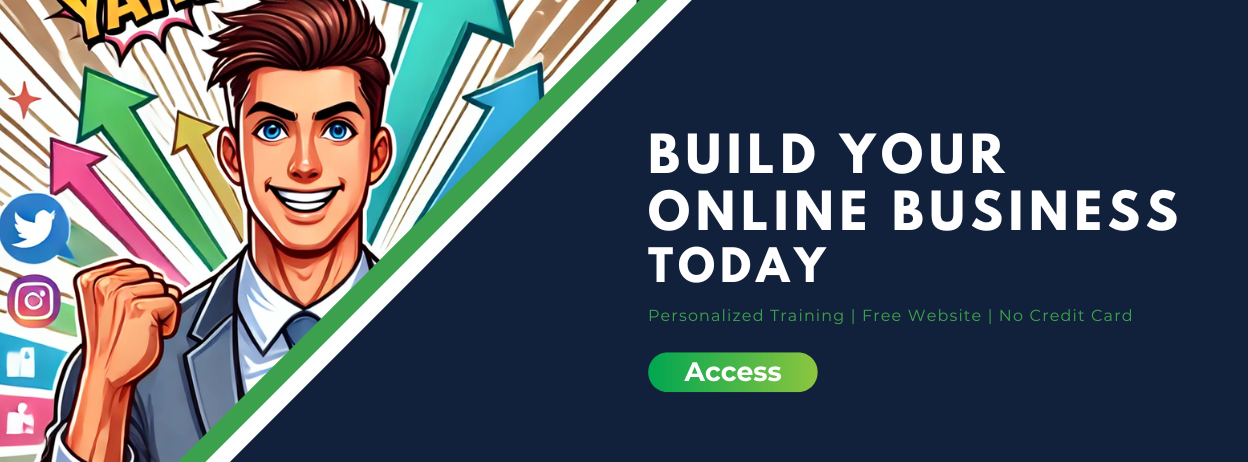To make money as an affiliate marketer, you need to attract people to your affiliate links. This is what we mean by traffic. After you have set up your affiliate website and your affiliate links are in place, it is time for you to drive people to your website.
But how do you do it? How do you drive traffic to your website?
There are many ways in which you can do it. In this article, you will learn about the Top 7 proven affiliate marketing traffic sources.
Why is Traffic important for your Affiliate Marketing business?
Whichever type of affiliate marketing program you have signed up with (Pay per click, pay per sale, or pay per lead), you need people to come to your website to start making money.
You can create the most amazing website with all the valuable information in your niche. But still, you might not get even a single visitor to your website. That is because the existence of your website has not been communicated to people who might want to see it.
You need to make your site visible by driving traffic to it. The traffic you drive is your potential customers. There are many ways to drive traffic to your website and there is no one right way. Many affiliate marketers have benefitted greatly by using a combination of these ways.
Top 7 Affiliate Marketing Traffic Sources
#1 Search Engine Optimization (SEO Marketing)
This is the most traditional way of driving traffic to your website. It is a freeway of attracting traffic to your website. In this method, you try to appear and rank at the top search results of various search engines.
Millions of people are surfing the internet using these search engines. People tend to click the results on the first page of the search engine result. Once you manage to appear on the first page of search engine results for particular keywords, your traffic increases greatly.
The two main components of getting this organic traffic are creating quality content and having a quality website. Search engines evaluate both of these factors before ranking a website. The quality content will provide value to the customer, which might help increase the number of affiliate purchases. The quality of the website improves the user experience.
Pros:
- Best for long-term growth and sustaining of business.
- People tend to trust the website that they found organically compared to ads.
Cons:
- It takes a long time to get organic traffic.
- You have to create content that gives value and keep posting constantly.
Even if you are driving traffic to your website using other methods, it is better to keep your website SEO optimized as it could help drive traffic in the long run.
#2 Google Ads
No one can question Google’s dominance on the internet. Google Search Engine gets on an average of 7 billion searches a day! When people ask a question to another, the answer these days is ‘Google it’. People trust Google to provide an answer to every single problem of theirs.
That is why Google Ads has a great reach. Why not use this to increase traffic to your website? You can sign up with Google Ads and pay them to publish your ads in a variety of places.
Google Ads allows you to customize your ad campaigns to a great extent. You can target people of a particular age group, people living in a particular area, and different keywords relating to your product. This will ensure that your ad reaches people who might actually be interested in your products or services.
These are common types of ads you can use with Google Ads:
- Search Ads: These are the ads that appear on the search page above or beside the organic search results.
- Google’s Display Network: Ads that are displayed in 3rd party websites who have signed up with Google Ads.
- Local Search Ads: Ads targeting customers based on a defined area is called local search ads. These are the ads you see in Google Maps or search results when you are looking for certain services near you.
- Remarketing: Remarketing allows you to target users who are already familiar with your brand. This kind of campaign is known to have higher conversion rates.
Signing up with Google Ads also allows you to post ads on YouTube which is actually the 3rd most used search engine.
Pros:
- High potential for great reach.
- Highly customizable ads that will allow you to target the right audience.
- You can fix a budget to ensure that you do not overspend beyond your budget.
Cons:
- The competition is very high when it comes to ad space.
- Since the process of auction is followed by Google Ads, only top-ranked ads (decided based on quality score and relevance) get displayed most of the time.
To learn more about Google Ads click here.
#3 Social media marketing
Social Media is another place where you can find people and drive free traffic to your website.
Today almost the entire world is on social media. Millions of people tend to check their social media more than once or twice every single day!
With SEO, you can only make people who are searching for the niche you are in to notice you. On the other hand, with social media, you can attract even those people who are not looking for the product you are selling to visit your site.
People in social media usually scroll through their feed without any goals. However, you could make them visit your website if you create content that grabs their attention and make them curious. This is why Social Media Marketing is priceless.
There are so many different platforms and interesting strategies that you can use to drive traffic to your website through social media marketing. I have written an article dedicated to driving traffic through social media!
One thing you have to watch out for is that each of the social media platforms is different (like Instagram, YouTube, and Twitter) and require different types of content and strategies. Whichever platform you are in, the key is to be active and interact with your audience.
Pros:
- Potential to create long time trust and following that could be repeat customers.
- It is free.
- It gives you access to a large number of people and allows you to interact with them.
Cons:
- It can take a while to create a following.
- You have to understand the algorithms of these different platforms.
- You have to keep creating and posting content regularly to get the attention of people.
#4 Facebook Ads
Okay, I know Facebook is one of the Social media platforms. But we are talking about Facebook Advertisement here which is a paid way to drive traffic to your website.
Facebook is one of the biggest players in the PPC advertising market. According to Zephoria Digital Marketing, 2.89 billion people are using Facebook and there are 1.66 billion people who are logging in daily to Facebook. Many of these people could be your potential customers depending on your business.
Facebook is to social media what Google is to search engines. Facebook has users across the globe. And what makes it more amazing than Google Ads is that Facebook Ads are much more visual and attractive. Rather than appearing as obvious Ads (which people don’t like much), Facebook ads look similar to Facebook posts. So, they have a higher click-through rate.
Similar to Google Ads, Facebook also allows you to target an audience based on different criteria and customize your ads extensively.
Pros:
- An active global audience that you can reach out to.
- Highly customizable ads that will allow you to target the right audience.
- You can fix a budget to ensure that you do not overspend beyond your budget.
Cons:
- The competition is very high when it comes to ad space.
#5 Mobile Advertising
Smartphones have taken the world by storm. Within a few years of introducing smartphones, it has gone from being a luxury to an essential item. While there is usually one computer or one or two laptops in the home through which people access the internet, every single member of the family has their own smart (apart from babies of course).
Smartphones are the number one reason why internet usage has skyrocketed in the past years. People use mobiles more frequently than any other gadget and carry it with them all the time.
Optimizing your website for mobile has become mandatory to rank in search engines. I think you get the picture.
Not only in websites and social media, but you can also reach out to the mobile audience in one more way: Apps! And apps do not have ad blockers, which means the user has to sit through it.
Many companies provide Mobile advertising services like Startapp, Tapjoy, and Leadbolt.
Pros:
- You can reach millions of mobile users.
- Mobile ads do not come with ad block options.
Cons:
- The cons of mobile advertising vary with respect to the company you use.
#6 Email Advertising
You would have heard of E-mail marketing where you collect email lists and send emails to them. Email advertising is different from that and it is underrated.
Some many websites or publishers send newsletters to their email subscribers. These publishers sell spaces in their newsletters for advertisements and you can buy those to put up your affiliate links there.
You will reach the inbox of your potential customer without having to go through the hassle of collecting emails and creating newsletters. You can also target to niche audience by finding publishers particular to your niche.
The only hardship you will encounter with this type of advertising is finding the publishers who are willing to sell ad spaces in your niche.
Pros:
- You can target your niche audience and reach their inbox directly.
- It is fast and can be more cost-efficient than others.
Cons:
- You might have to follow the rules and requirements stipulated by the publisher to be allowed to put up your ad.
#7 Sponsored content
This is one of the paid ways to attract traffic to your website. Sponsored content is a type of marketing where you pay a blogger or influencer to write about your product on their website/ social media handle for money. This is also called Native advertising.
Sponsored articles/social media posts are usually similar to the normal content. But the intention behind a sponsored content is to drive traffic to a particular product or website. Essentially you are leveraging the trust already established by few people to increase your traffic/sales.
Usually, the influencers or bloggers charge based on the number of views on the article and are comparatively straight forward compared to other paid traffic methods.
You have to find bloggers and influencers in your niche and approach them with your products. Negotiate on the price for posting content. You can either directly give your affiliate links or give links to your website.
Pros:
- You can approach those websites and influencers who have a strong following that trusts them. It gives you a higher chance of getting traffic.
- You can fix the rate per piece of content or number of views.
Cons:
- Depending on the influencer or blogger, the sponsored post could be expensive, especially if you are new to affiliate marketing.
- It is argued that sponsored posts that do not disclose that it is sponsored are considered unethical and people feel cheated.
It is better to disclose whether a post is sponsored or not. Surveys have shown that when people trust the influencer, they don’t mind clicking the sponsored link.
These are the top 7 Affiliate Marketing Traffic Sources that you can use.
Do not put all your fruits on one basket though. The best practice is to use a combination of different traffic sources the maximize your results.
I hope you found this article useful.






